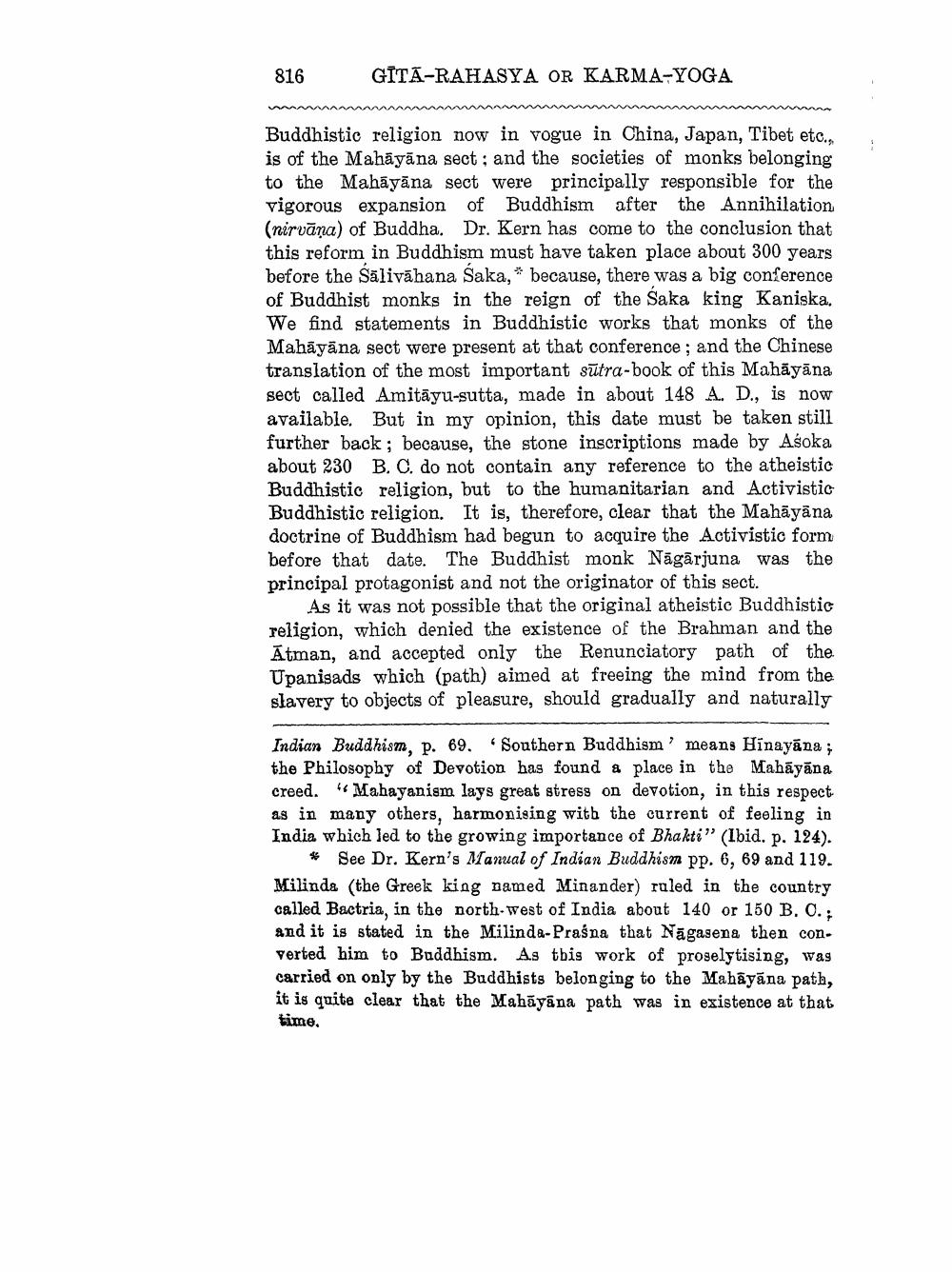________________
816
GITA-RAHASYA OR KARMA-YOGA
mima
Buddhistic religion now in vogue in China, Japan, Tibet etc., is of the Mahāyāna sect; and the societies of monks belonging to the Mahāyāna sect were principally responsible for the vigorous expansion of Buddhism after the Annihilation (nirvana) of Buddha. Dr. Kern has come to the conclusion that this reform in Buddhism must have taken place about 300 years before the Sālivāhana Saka, * because, there was a big conference of Buddhist monks in the reign of the Saka king Kaniska. We find statements in Buddhistic works that monks of the Mahāyāna sect were present at that conference; and the Chinese translation of the most important sūtra-book of this Mahāyāna sect called Amitāyu-sutta, made in about 148 A. D., is now available. But in my opinion, this date must be taken still further back ; because, the stone inscriptions made by Aśoka about 230 B. C. do not contain any reference to the atheistic Buddhistic religion, but to the humanitarian and Activistic Buddhistic religion. It is, therefore, clear that the Mahāyāna doctrine of Buddhism had begun to acquire the Activistic form before that date. The Buddhist monk Nāgārjuna was the principal protagonist and not the originator of this sect.
As it was not possible that the original atheistic Buddhistic religion, which denied the existence of the Brahman and the Atman, and accepted only the Renunciatory path of the Upanisads which (path) aimed at freeing the mind from the slavery to objects of pleasure, should gradually and naturally
Indian Buddhism, p. 69. Southern Buddhism' means Hinayāna; the Philosophy of Devotion has found a place in the Mahāyāna creed. "Mahayanism lays great stress on devotion, in this respect as in many others, harmonising with the current of feeling in India which led to the growing importance of Bhakti” (Ibid. p. 124).
* See Dr. Kern's Manual of Indian Buddhism pp. 6, 69 and 119. Milinda (the Greek king named Minander) ruled in the country called Bactria, in the north-west of India about 140 or 150 B. O.: and it is stated in the Milinda-Praśna that Nāgasena then con. verted him to Buddhism. As this work of proselytising, was carried on only by the Buddhists belonging to the Mahāyāna path, it is quite clear that the Mahāyāna path was in existence at that time.
it is quite clear by the Buddhis this




